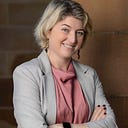Member-only story
Building knowledge through powerful relationships — introducing the relational method
By Dr Amanda Tattersall and Professor Marc Stears
In 2018 the journal Nature declared that the best research is produced when researchers and communities work together — co-producing or co-designing knowledge. Co-design has a long history and one of its more interesting off-shoots is the civil society practice known as community organising. Though not as widely known as some other approaches, co-design’s links to community organising is worth closer investigation as it offers valuable skills and concepts for aspiring co-designers seeking strategies to improve how they work with communities to produce creative research partnerships and new insights into intractable problems.

While Saul Alinsky is famous for his role as the ‘godfather’ of community organising, what is often overlooked is that important elements of his approach came from the ethnographic practices taught to him in the late 1920s and early 1930s by the Chicago School of Pragmatism (see Engel 2021, Horwitt 1992 and Bretherton 2015 on this, references below).
At its core, community organising is an approach to public life that strives to create a common good politics by placing people at the centre. The approach focuses on a few crucial elements: the importance of relationships, leadership, organisation, power and action. Community organisers build powerful broad-based networks of organisations in specific geographies, like cities. These organisations use a range of practical strategies — such as relational meetings, the organising cycle, power analysis, evaluation — to build relationships with each other, collaborate on strategic campaigns and build power for change (see podcast exploring organising below).
We have come to understand the value of community organising to our scholarly work because we have not walked a traditional academic path. Both of us have played extensive roles beyond the university gate in civil society, politics and the public service. It was in these roles that we became practitioners of community organising. In returning to the university, we brought these organising skills with us, keen to see how we could adapt them to a research context.
